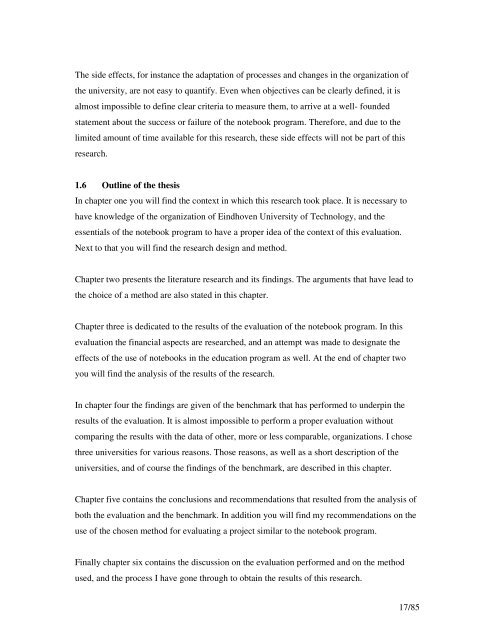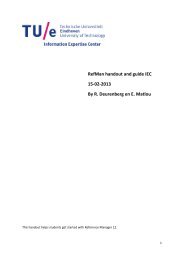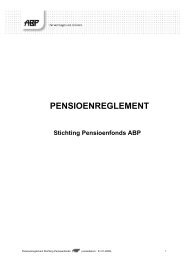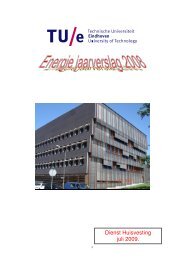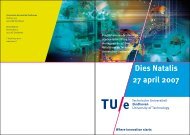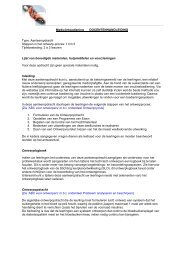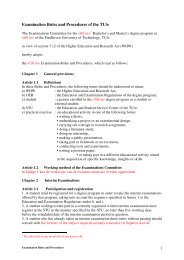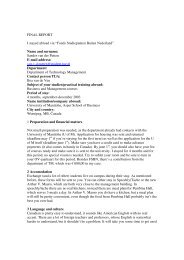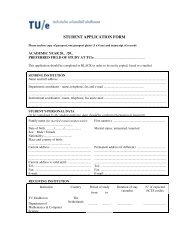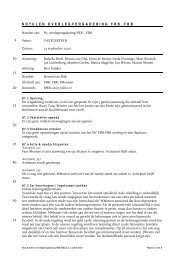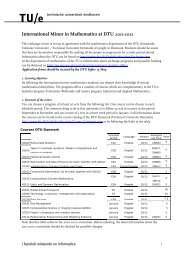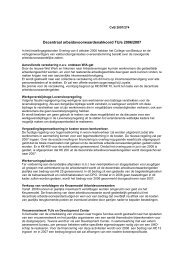TU/e notebook program - Technische Universiteit Eindhoven
TU/e notebook program - Technische Universiteit Eindhoven
TU/e notebook program - Technische Universiteit Eindhoven
Create successful ePaper yourself
Turn your PDF publications into a flip-book with our unique Google optimized e-Paper software.
The side effects, for instance the adaptation of processes and changes in the organization of<br />
the university, are not easy to quantify. Even when objectives can be clearly defined, it is<br />
almost impossible to define clear criteria to measure them, to arrive at a well- founded<br />
statement about the success or failure of the <strong>notebook</strong> <strong>program</strong>. Therefore, and due to the<br />
limited amount of time available for this research, these side effects will not be part of this<br />
research.<br />
1.6 Outline of the thesis<br />
In chapter one you will find the context in which this research took place. It is necessary to<br />
have knowledge of the organization of <strong>Eindhoven</strong> University of Technology, and the<br />
essentials of the <strong>notebook</strong> <strong>program</strong> to have a proper idea of the context of this evaluation.<br />
Next to that you will find the research design and method.<br />
Chapter two presents the literature research and its findings. The arguments that have lead to<br />
the choice of a method are also stated in this chapter.<br />
Chapter three is dedicated to the results of the evaluation of the <strong>notebook</strong> <strong>program</strong>. In this<br />
evaluation the financial aspects are researched, and an attempt was made to designate the<br />
effects of the use of <strong>notebook</strong>s in the education <strong>program</strong> as well. At the end of chapter two<br />
you will find the analysis of the results of the research.<br />
In chapter four the findings are given of the benchmark that has performed to underpin the<br />
results of the evaluation. It is almost impossible to perform a proper evaluation without<br />
comparing the results with the data of other, more or less comparable, organizations. I chose<br />
three universities for various reasons. Those reasons, as well as a short description of the<br />
universities, and of course the findings of the benchmark, are described in this chapter.<br />
Chapter five contains the conclusions and recommendations that resulted from the analysis of<br />
both the evaluation and the benchmark. In addition you will find my recommendations on the<br />
use of the chosen method for evaluating a project similar to the <strong>notebook</strong> <strong>program</strong>.<br />
Finally chapter six contains the discussion on the evaluation performed and on the method<br />
used, and the process I have gone through to obtain the results of this research.<br />
17/85


